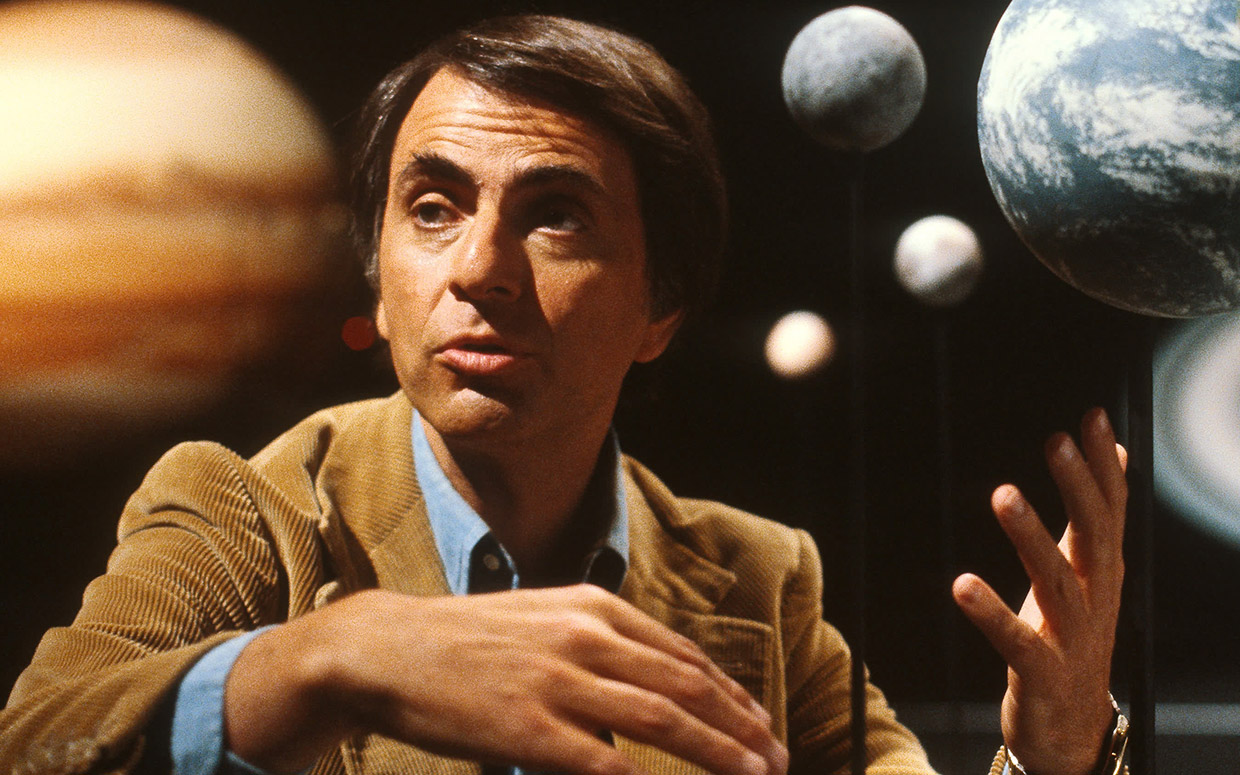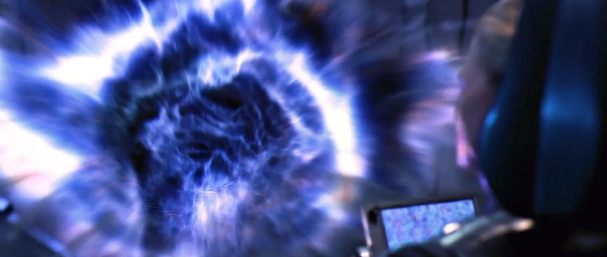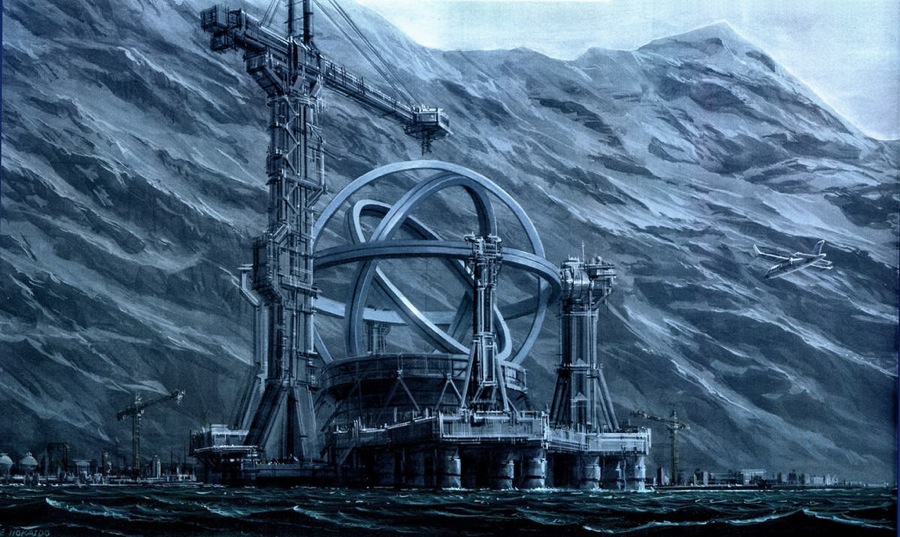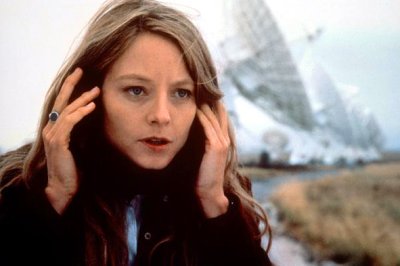“I think if we ever reach the point where we think we thoroughly understand who we are and where we came from, we will have failed. I think this search does not lead to a complacent satisfaction that we know the answer, nor an arrogant sense that the answer is before us and we need only to do one more experiment to find out. It goes with a courageous intent to greet the universe as it really is, not to foist our emotional predispositions on it [as religion does] but to courageously accept what our explorations tell us.” – Carl Sagan, The Varieties of Scientific Experience: A Personal View of the Search for God

This quote from Carl Sagan in 1985 beautifully articulates the thrust behind his elegant work of fiction – Contact. Contact is a substantially complex, interesting, and challenging story. In point of fact, it is a wonderfully creative and fascinating story. While, like Sagan’s character Palmer Joss, I disagree with Sagan’s conclusions, I do agree with much of his approach and I respect his attempt to know truth. Of all the non-theistic science writers I have encountered, I think that Sagan shows the most respect to those of us who conclude that there is a Master Creator, and that He is knowable. Further, a close reading of Contact seems to indicate that Sagan envied us our faith when he perceived that we were otherwise rational and careful in our conclusions.
“They overestimate what they know and underestimate what we know. When we ask for explanations, they tell us it takes years to understand. I know about that, because in religion also there are things that take years to understand. You can spend a lifetime and never come close to understanding the nature of Almighty God. But you don’t see the scientists coming to religious leaders to ask them about their years of study and insight and prayer.” (p 130)
Silly as it is, my husband and I have enjoyed the t.v. series Bones. I mention it because I think that the relationship between Booth and Bones is quite similar to the relationship that Sagan develops between two of his most interesting Contact characters.

Dr. Ellie Arroway is an agnostic astronomer and a serious scientist. She does not deny the possibility of a God, but she is a committed skeptic who hasn’t encountered the requisite proof to be convinced. Ellie is the main character in this story, and it is easy to read Sagan into her without damaging Sagan or Ellie too badly. While there are many characters who feature more prominently in the action of the story, it is clear to the astute reader that Palmer Joss is the only character that really challenges (and ultimately supports) Ellie. Joss is a theologian but he is also deeply rational, well read, scientifically minded, and has little patience for fundamentalist religious types.
“Palmer Joss combined his even handed criticism of science and religion with a fervent plea for moral rectitude and a respect for the intelligence of his flock.” (p. 136)
Contact is a romance. It is a romance of rational science and irrational belief. A romance of ideas, and possibilities, and spiritual tensions.
Mainstream Christians today believe in some version of the Genesis accounts of creation. Of course, there is little consensus among Christians on how to read those two creation accounts and square them with the scientific “evidence” of Darwinian theory and other widely accepted scientific hypotheses. Many science-minded Christians opt for the non-literal seven-day creation. Some Catholics, for example, believe that each day in the creation account signifies an epoch or an age. Even Sagan is noncommittal on the rational origin arguments. “Nobody has seen evolution happen, nobody has been marking time since the Creation.” (p. 136)

In all of my reading about creation vs. evolution, I always felt as though I was being forced to choose one. C.S. Lewis’s Space Trilogy changed all of that for me. In his science fiction fantasy, our sovereign and true God has created many worlds. Lewis’s stories explore the possibilities of other planets with intelligent life possessed of immortal souls. Each planet, however, marks a different phase of spiritual evolution. As opposed to something like War of the Worlds by H. G. Wells, Sagan’s story seems more like Lewis. And I don’t think that was by accident. In fact, Sagan named a spaceship in Contact, The Narnia, and there is a scene about wormholes that strongly reminds me of the ponds and rings in The Magician’s Nephew. This story, like Lewis’s trilogy, is more about ideas and human essence than about scientific achievement or technical prowess. This makes it all the more enchanting.
“The picture, of course, was alarming. We could tell you were in deep trouble. But the music told us something else. The Beethoven told us there was hope.” (p. 359)
Throughout this story, we are invited to retain hope for the human race. Hope that defies science and logic. Hope that hints at something, or someone, greater. When Ellie meets her dad on the beach (I am being purposefully vague in the interest of spoilers), we learn something significant – these other intelligent lives have souls of some kind and they too do not know who or what the prime mover, master creator, or author of it all is. Sagan’s technique allows for mystery. The kind of mystery that science cannot yet explain and the kind of mystery that faith knows defies explanation. Even though Sagan’s third wife staunchly denies that Sagan was ever convinced of the existence of a personal and living God, he seems bent on chasing the idea beyond the limits of rational conviction. “Perhaps we are all wayfarers on the way to truth…” (p. 173).
“There were excesses in science and there were excesses in religion. A reasonable man wouldn’t be stampeded by either one.” (p. 136)
 This highly creative story invites us into a respectful debate between the two extremes. While Sagan writes completely detestable characters for each end of the spectrum, he is very careful to create two characters who are open minded enough to look past the blinding rhetoric and courageously meet truth on its own terms. In Ellie and Palmer we see two brilliant, hopeful, and curious creatures who are locked into their own convictions but are so impressed by the other that they allow themselves to be stretched and challenged.
This highly creative story invites us into a respectful debate between the two extremes. While Sagan writes completely detestable characters for each end of the spectrum, he is very careful to create two characters who are open minded enough to look past the blinding rhetoric and courageously meet truth on its own terms. In Ellie and Palmer we see two brilliant, hopeful, and curious creatures who are locked into their own convictions but are so impressed by the other that they allow themselves to be stretched and challenged.
“There were many interpretations of Scripture and many interpretations of the natural world. Both were created by God, so both must be mutually consistent.” (p. 136)
I loved this book. I have loved this movie for many years and have watched it dozens of times. In some ways, I think the movie is more true to the story that Sagan seems to be trying to tell than the book is. In other ways, I am glad to have all 434 pages of additional characters and complex layers. I think that both can stand together or apart on their own merits. And I think that both can do much to challenge and stretch everyday Christians who marvel at God’s enormous and gorgeous cosmic creativity.

When I was a high school religion teacher, I used Contact in one of my classes to illustrate the marriage of science and faith, and to help my students grasp the power of rhetoric. While the movie is not perfectly moral, it is much more teen friendly than the book. Sadly, this book very clearly espouses a post sexual revolution point of view. While none of the sex talk is graphic, descriptive, or on scene, comments about casual sex are peppered throughout the text. It’s totally unavoidable. I strongly recommend that parents of teens pre-read.
“Look, we all have a thirst for wonder. It’s a deeply human quality. Science and religion are both bound up with it.” (p. 173)
Modern fairy tales are all the rage today. Everyone wants to reinvent the fairy tale archetype. Frankly, most of that is lost on me. I love the old fairy tales for the truths they reveal about their time and place. Their power, to my mind, is in how they convey the transcendence of that truth into any time. They don’t need to be modernized to strike a chord with us because we are wired to receive truth no matter how it is disguised. Instead, Contact is a new fairy tale. In this modern fairy tale, we get to explore deep space only to find that Beethoven is our best ambassador. Beethoven communicates the essential human qualities of truth, goodness, and beauty. Beethoven communicates hope.
One Comment
Comments are closed.